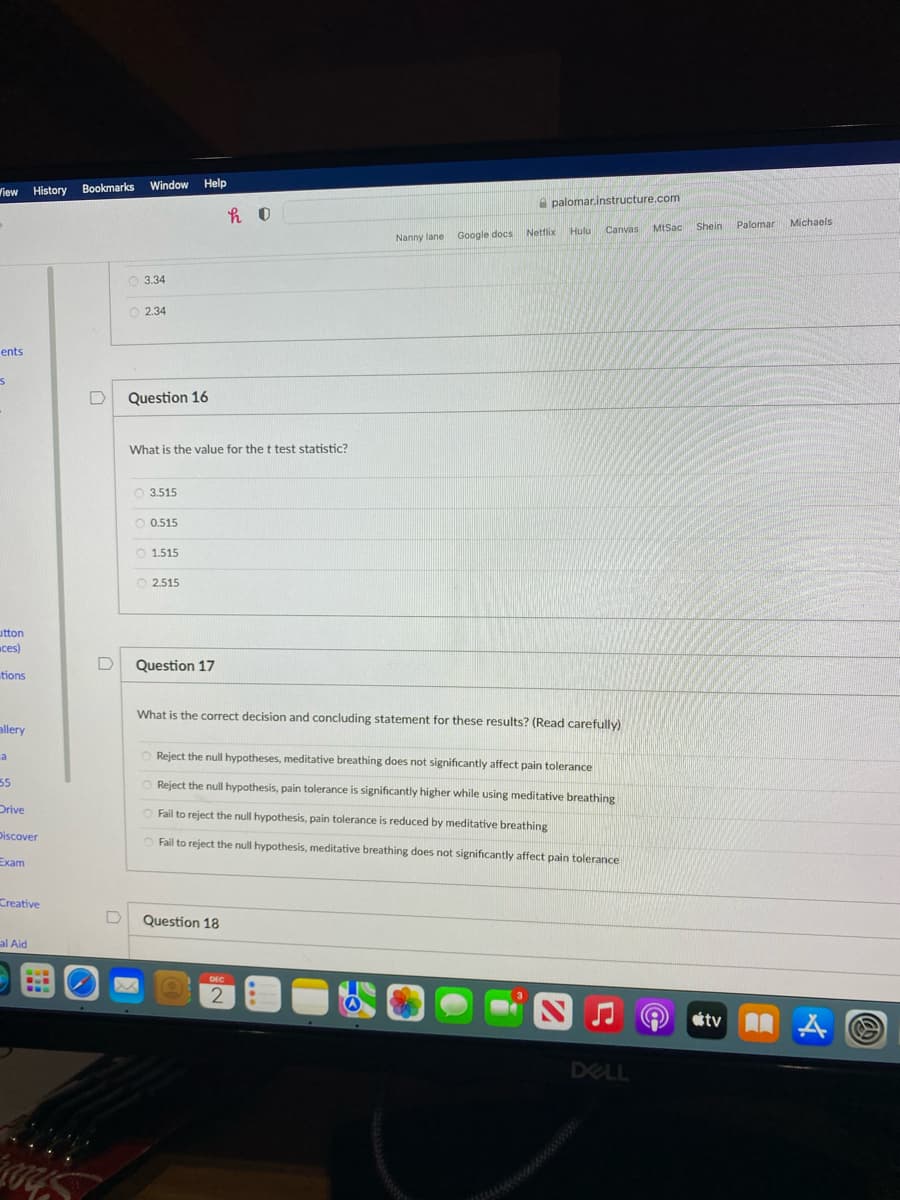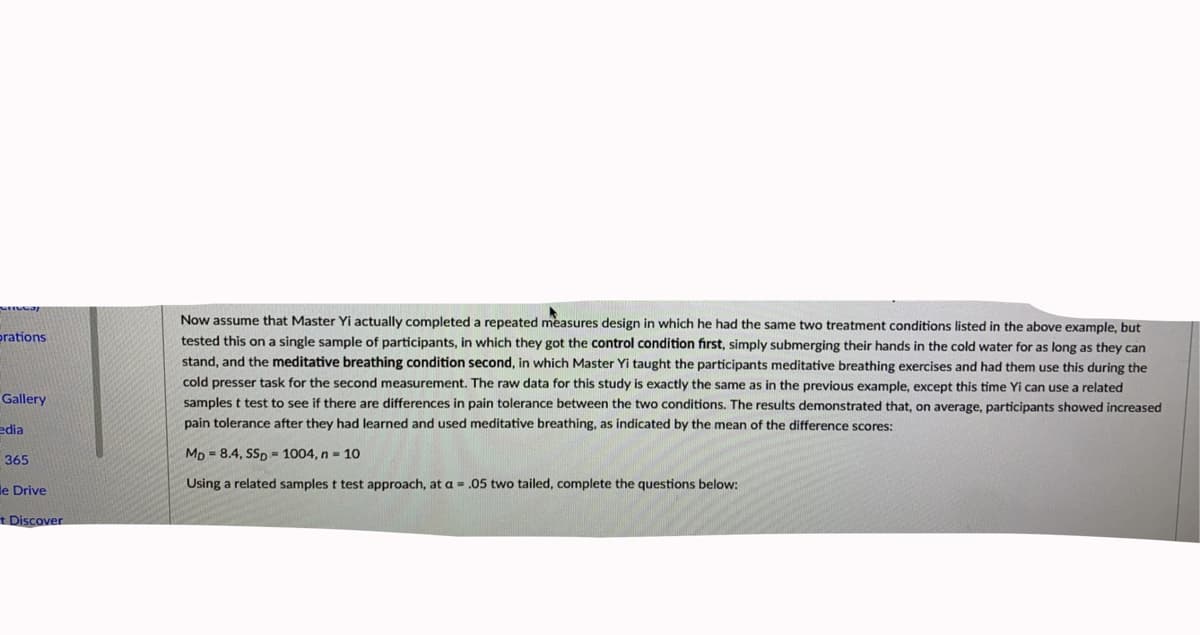Now assume that Master Yi actually completed a repeated measures design in which he had the same two treatment conditions listed in the above example, but tested this on a single sample of participants, in which they got the control condition first, simply submerging their hands in the cold water for as long as they can stand, and the meditative breathing condition second, in which Master Yi taught the participants meditative breathing exercises and had them use this during the cold presser task for the second measurement. The raw data for this study is exactly the same as in the previous example, except this time Yi can use a related samples t test to see if there are differences in pain tolerance between the two conditions. The results demonstrated that, on average, participants showed increased pain tolerance after they had learned and used meditative breathing, as indicated by the mean of the difference scores: Mp - 8.4, SSp -1004, n 10 Using a related samples t test approach, at a - .05 two tailed, complete the questions below:
Now assume that Master Yi actually completed a repeated measures design in which he had the same two treatment conditions listed in the above example, but tested this on a single sample of participants, in which they got the control condition first, simply submerging their hands in the cold water for as long as they can stand, and the meditative breathing condition second, in which Master Yi taught the participants meditative breathing exercises and had them use this during the cold presser task for the second measurement. The raw data for this study is exactly the same as in the previous example, except this time Yi can use a related samples t test to see if there are differences in pain tolerance between the two conditions. The results demonstrated that, on average, participants showed increased pain tolerance after they had learned and used meditative breathing, as indicated by the mean of the difference scores: Mp - 8.4, SSp -1004, n 10 Using a related samples t test approach, at a - .05 two tailed, complete the questions below:
Holt Mcdougal Larson Pre-algebra: Student Edition 2012
1st Edition
ISBN:9780547587776
Author:HOLT MCDOUGAL
Publisher:HOLT MCDOUGAL
Chapter11: Data Analysis And Probability
Section: Chapter Questions
Problem 8CR
Related questions
Question
in photos

Transcribed Image Text:Bookmarks
Window Help
Wiew History
A palomar.instructure.com
Shein
Palomar
Michaels
Hulu Canvas
MtSac
Netflix
Nanny lane Google docs
O 3.34
O 2.34
ents
D
Question 16
What is the value for the t test statistic?
O 3.515
0.515
O 1.515
O 2.515
utton
ces)
Question 17
tions
What is the correct decision and concluding statement for these results? (Read carefully)
allery
O Reject the null hypotheses, meditative breathing does not significantly affect pain tolerance
a
55
O Reject the null hypothesis, pain tolerance is significantly higher while using meditative breathing
Drive
O Fail to reject the null hypothesis, pain tolerance is reduced by meditative breathing
Discover
Fail to reject the null hypothesis, meditative breathing does not significantly affect pain tolerance
Exam
Creative
Question 18
al Aid
DEC
...
otv
DELL

Transcribed Image Text:Now assume that Master Yi actually completed a repeated measures design in which he had the same two treatment conditions listed in the above example, but
prations
tested this on a single sample of participants, in which they got the control condition first, simply submerging their hands in the cold water for as long as they can
stand, and the meditative breathing condition second, in which Master Yi taught the participants meditative breathing exercises and had them use this during the
cold presser task for the second measurement. The raw data for this study is exactly the same as in the previous example, except this time Yi can use a related
samples t test to see if there are differences in pain tolerance between the two conditions. The results demonstrated that, on average, participants showed increased
Gallery
edia
pain tolerance after they had learned and used meditative breathing, as indicated by the mean of the difference scores:
Mp = 8.4, SSp = 1004, n = 10
365
le Drive
Using a related samples t test approach, at a = .05 two tailed, complete the questions below:
t Discover
Expert Solution
This question has been solved!
Explore an expertly crafted, step-by-step solution for a thorough understanding of key concepts.
This is a popular solution!
Trending now
This is a popular solution!
Step by step
Solved in 3 steps with 4 images

Recommended textbooks for you

Holt Mcdougal Larson Pre-algebra: Student Edition…
Algebra
ISBN:
9780547587776
Author:
HOLT MCDOUGAL
Publisher:
HOLT MCDOUGAL

Holt Mcdougal Larson Pre-algebra: Student Edition…
Algebra
ISBN:
9780547587776
Author:
HOLT MCDOUGAL
Publisher:
HOLT MCDOUGAL